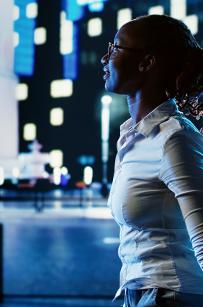

How the Western Hemisphere’s Busiest Container Port Got Digital
What if we showed you how Jacobs and Port of Los Angeles dove in to digital intelligence and automation on its competitive path to achieving record-setting cargo operations?

Every day, nearly a billion dollars of cargo moves through the 27 terminals and 270 berths at the Port of Los Angeles.
Known as America’s Port ®, the Port of Los Angeles contains 7,500 acres of land and water along 43 miles of waterfront on San Pedro Bay, just 20 miles from the heart of downtown LA.
Fueling almost $300 billion in annual trade, the port serves the main connection for trade between the United States and Asia and is the busiest container port in the western hemisphere. With global maritime trade expected to double in the coming decades – America’s Port just couldn’t afford putting its operations at risk.
Global shipping traffic growth aside, the port knew that to stay competitive, they’d need to accommodate enormous new vessels and make some operational changes. The digitization of ports is expected to boost productivity by as much as 30 percent.
But what if we showed you how Jacobs helped the Port become one of the first on the U.S. West Coast to explore how using robotic cargo handling equipment, intelligence and other digital tools can continuously improve efficiency, speed to market and reliability?
-
30 %
expected increases in productivity through digitization of ports
-
1.6 M
TEU capability, helping move a record-setting a total of 9.3 million TEUs at POLA in 2017
“Our port experts have worked tirelessly to redevelop an existing conventional container terminal into a state of-the-art automated container terminal without impacting operations. This terminal will now serve as the standard for U.S. ports and is the first fully automated terminal on the U.S. West Coast – that’s something the Port of Los Angeles and Jacobs are very proud of.”
Speedy robots, record-setting operations
Looking to boost its productivity, the Port of Los Angeles decided to embark on several capital improvements, including engaging us to design the first fully-automated container terminal on the U.S. West Coast.
Now when cargo moves through the 135-acre TraPac automated terminal, it’s picked up by electric, driverless shuttle carriers that use an intelligent system of differential GPS, magnets and lasers to navigate. These massive shuttle carriers, towering four-stories-high, pick up the cargo containers and swiftly deliver them to electric stacking cranes. These cranes are equally automated to sort and stack the containers to await their next destinations, and when it’s time to load the container onto a truck or freight train, the robotic stacking cranes do the dirty work.
The TraPac terminal is one of the world’s first to use these automated shuttle carriers alongside automated stacking cranes, achieving:
- Increased efficiency, reliability and safety.
- Improved capacity to handle large container ships.
- Maximized yard space utilization.
- Enhanced environmental benefits.
- Amplified competitiveness for the West Coast.
By embracing digital technology, the Port of Los Angeles is even achieving record-setting cargo operations. With the new competitive TraPac terminal, the Port can move 1.6 million 20- foot- equivalent -units (TEUs) annually, helping move more cargo than ever before in the Port’s 110-year history – a total of 9.3 million TEUs in 2017.
Beyond being the first-of-its-kind on the U.S. west coast, Port of Los Angeles’ automated facility is an example of how integrating technology-forward solutions can unlock unprecedented social, environmental and economic outcomes.
Future Foundations.
Co-creating the world to come

From developing climate resilience and transitioning to a low-carbon future, to modernizing and transforming infrastructure, governments and businesses face critical challenges. How they respond will define our future.
As our clients navigate these challenges, we help them think differently – working together to pioneer tomorrow's infrastructure solutions and build the foundations for a prosperous, secure future.















































